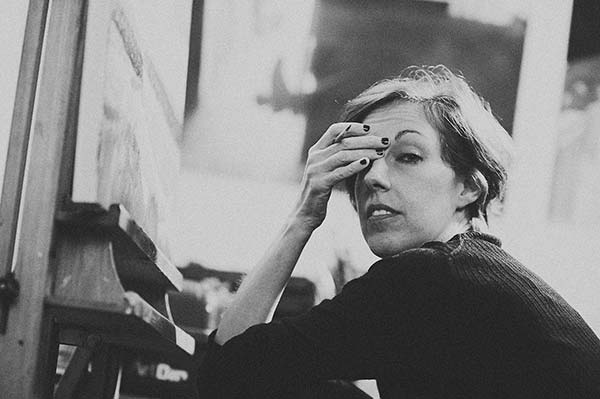Eileen Murphy has spent most of her life along the Hudson River, first in Westchester and Columbia Counties, and now in Brooklyn, where she has lived for the past fifteen years. Murphy has shown widely in New York City and in Hudson, NY. She has been awarded residencies to the Vermont Studio Center and Yaddo. She’s also been featured in publications such as Harper’s Magazine. In 2017, she received the Individual Artist Award from the Santo Foundation and was invited by the US Department of State to participate in the Art in the Embassies program. Her work is currently on view at the American Embassy in Algiers, Algeria. She is currently represented by Garvey|Simon in New York City and Carrie Haddad Gallery in Hudson, New York. Murphy holds a Bachelor of Arts degree from Mount Holyoke College and a Masters of Fine Arts from the Pratt Institute.
Interview with Eileen Murphy
By Jennifer Nelson, WTP Feature Writer
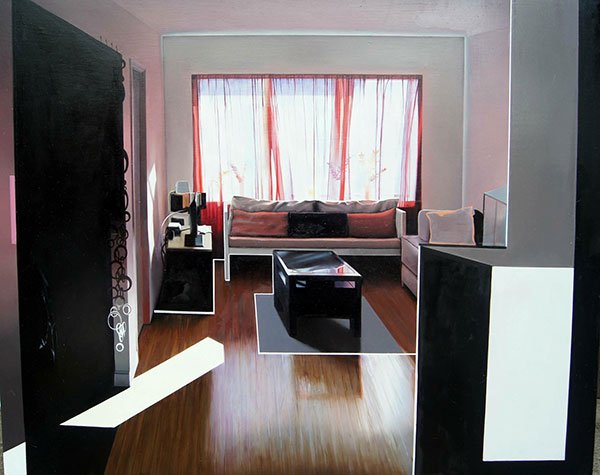
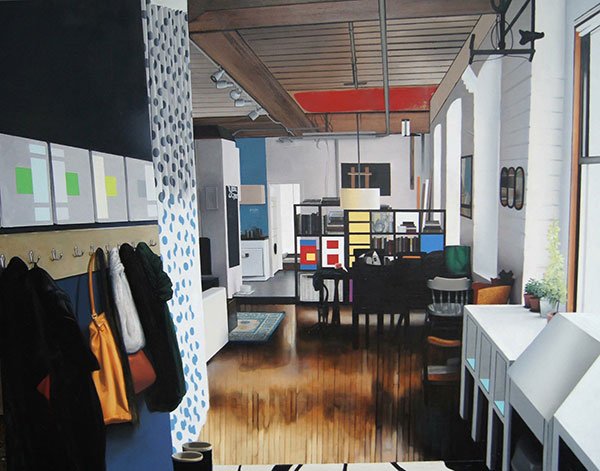
Nelson: Can you talk about the series Interiors, which appears in this month’s Woven Tale Press? These seem quite a departure from your landscapes, and especially intriguing—not to mention powerful—as to your choice of perspective; not quite abstract, but neither are they exactly realistic.
Murphy: I love this question! Although it’s more accurate to say that the landscapes were a departure from the interiors, since I made the interiors first. I had very specific formal interests when working on those paintings, mostly having to do with the slow changes in color on the walls and other surfaces, and the abstracting quality of the light. I’m very interested in the tension of painting deep illusionistic space on a flat surface, and some of the outlines and abstract shapes in the interiors emphasize that tension. So does the unnatural perspective—it’s close to reality, but “off” enough to remind the viewer of the flatness of the picture plane. I think of those paintings as my Wall, Window, Door series, and eventually I moved out of the window and into the landscape. My formal concerns shifted somewhat, but I’m still very interested in the flatness of the surface, although the effect is subtler now in the landscapes.
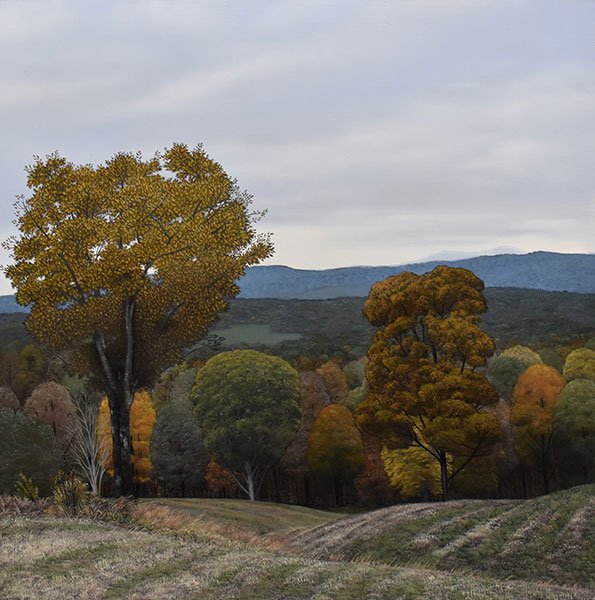
Nelson: How did you come to choose oil paints as your preferred medium?
Murphy: I don’t ever remember making a specific decision about that; all I know is that I’ve really never worked with acrylics at all. The first paintings that I loved were Dutch still lives from the 1600s–1700s and they were oils, so maybe that’s why I chose them, but I don’t ever remember making a conscious decision about that. I loved oils from the first time I tried them and probably I just wasn’t that motivated to wander that far afield from them because I enjoyed them so much (and still do)!
Nelson: Please talk about being invited by the US Department of State to participate in the Art in the Embassies program, and the visit to Algiers to see your work at the embassy there.
Murphy: That trip was incredible. It was a complete accident of fate, as well. The US Ambassador to Algeria happened to choose one of my paintings to decorate his residence there, and although he also chose work by several other artists, the Embassy invited me there to do some cultural programming. I gave a few lectures but the real highlight was teaching a four-day workshop with students who attended the fine art college there. They were so generous and interested and I’m sure I learned as much from them as they did from me, if not more!
Nelson: How has living in the Hudson River Valley and Brooklyn impacted your work and development as an artist?
Murphy: I often think that I didn’t properly see the Hudson Valley until I left it. I had to move to Brooklyn and travel more throughout the world before I really understood what a beautiful place I’m from. I learned about the Hudson River School in high school and, of course, I admired those paintings but I didn’t feel a real connection with them until much later. Now I feel incredibly lucky to have access to both Brooklyn and Columbia County.
Nelson: How does teaching oil painting inform your practice, including developing online tutorial videos on painting?
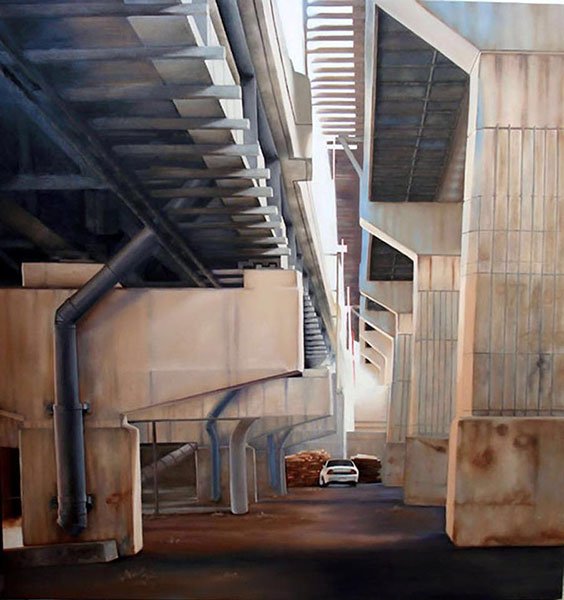
Murphy: Teaching has more or less reminded me of the pleasures of the first things I learned to love about painting. I said to someone recently that I could pretty happily make limited palette still life paintings for the rest of my life—that’s all I really need! It’s also been interesting, after working for so many years on my own in silence, to have to verbalize my process in both private lessons and on my tutorial videos. At times, it’s clarifying to actually have to put words to what I’m doing and it’s helped me codify some of the things that I believe to be true about painting.
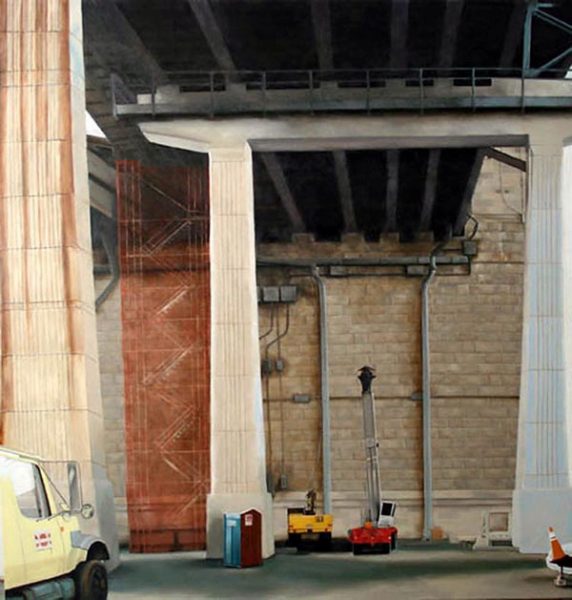
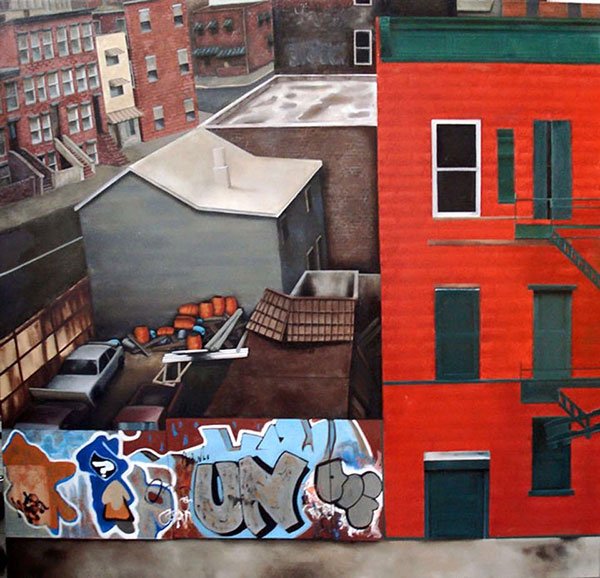
Nelson: Several series including 48” x 50” (Wburg) show the infrastructure of cities, which, like your Interiors, is in a sharp contrast to your landscapes. Please talk about how you got interested in depicting city life, and the rewards of using large canvases for this particular series?
Murphy: I made this series shortly after I moved to Brooklyn; it predates the interiors and the landscapes. I actually see all three of those series as closely related—they are explorations of my spaces. The size of the city paintings was initially dictated by chance. A studio neighbor gave me a 48” x 50” canvas, and I was pleased with the way that particular size related to my own size as a person, and so I continued the series with those dimensions.
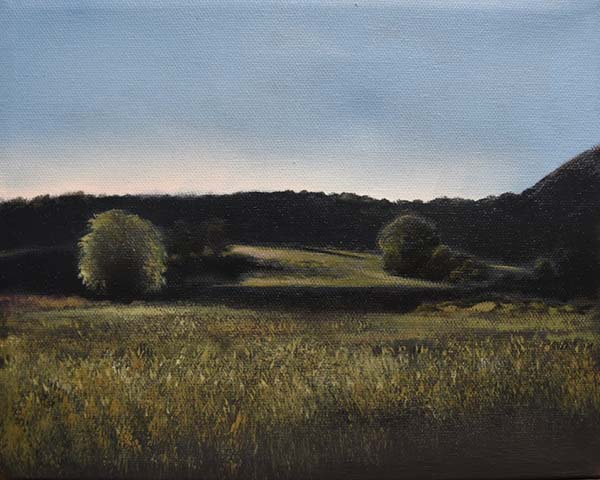
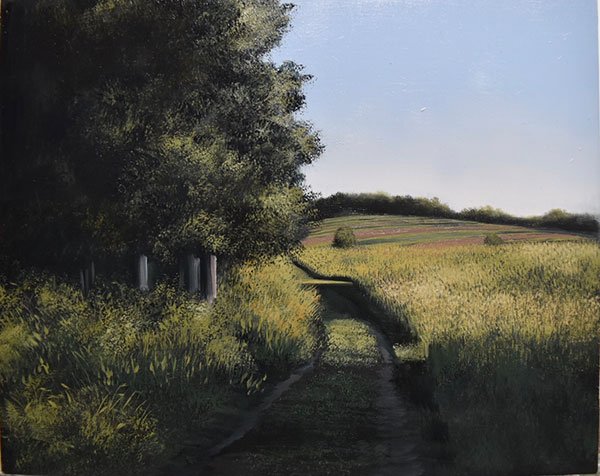
Nelson: In the series Small Work, you depict winter and summer landscapes using 8” x 10” canvases. What are the challenges of working on such a small scale?
Murphy: I really enjoy the brevity of those pieces. Most of my work takes a pretty long time, so it’s good for me to sit down and make myself do something in one sitting. I think color is particularly important in those paintings—color is always important, of course, but the scale of those little paintings is so unrelated to the scale of the scene they depict, that color is a big clue to the feeling and mood that I’m trying to get across to the viewer.
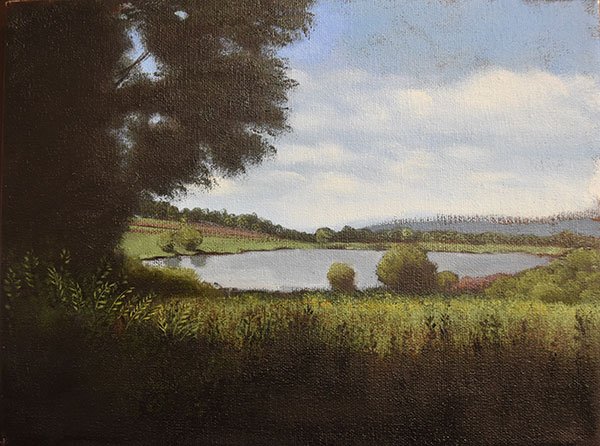
Nelson: How do you see your art evolving in the future?
Murphy: It’s hard to know, but I could see a point in the future when the paintings come back in through the window and I leave the landscape and start making still lives exclusively. They are my first love and they are a big part of how I teach painting. But time will tell!
Copyright 2019 Woven Tale Press LLC. All Rights Reserved.

